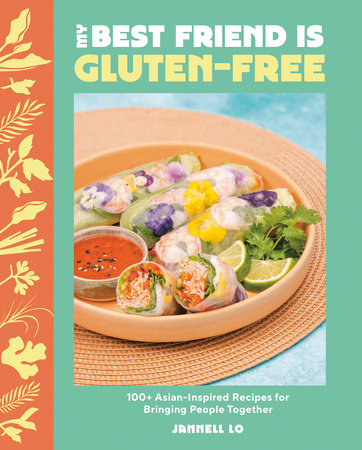From the IntroductionFor the first 20 years of my life, I juggled two identities. At home, I was Chinese. At school, I was Canadian. When I stepped into professional kitchens, Western cuisines took center stage, leaving little room for the flavors that had shaped my childhood. I craved a space where my dual identity wasn’t just accepted but celebrated—a space where I could be unabashedly Jannell, revealing the layers that make up who I am. This desire drove me to find a deeper connection to my identity through cooking my own food, blending the influences of my upbringing with the skills I honed in professional kitchens.
Meeting Reid, whose curiosity about Chinese cuisine mirrored my own passion for culinary exploration, reminded me of the rich tapestry of my experiences as a Chinese-Canadian gal from Toronto, and the importance of sharing those flavors and stories with others. I no longer wanted to hide behind foods that my friends had taught me were “easy to like”—pizza, pasta, and pancakes are great, but they never brought me comfort the way a bowl of saucy mapo tofu or congee do.
So much of my family’s time together was spent over food. Whether it was watching my grandma make glutinous rice dumplings, tending to my grandpa’s winter melons in the yard, or feasting with my parents at the best Chinese seafood restaurants across Toronto, food expressed love when there wasn’t the vocabulary to express it through words. From healing soups to elaborate hot pot meals, my parents strived to give my sisters and me a life of abundance, joy, and security.
When Reid and I met, it was clear that he came from the same school of food-as-love that I did. Because of his early-childhood diagnosis of celiac, Reid’s mom spent hours in the kitchen adjusting her recipes to fit his diet, and he came to see all her work as a pure expression of love. Following her example, he learned his way around a kitchen out of necessity and discovered an appreciation for eating, cooking, and sharing these dishes with loved ones. Both Reid and I had our own version of the desire to belong, particularly within the context of food as a means of connection.
The difficulty was highlighted when we began to navigate his gluten allergy together. Reid was
used to navigating the gluten-free world of the Western foods he had grown up with, but it was
now, when I was keen on taking him out for dim sum, that we came to roadblocks. I realized that
many Asian condiments contain sneaky traces of gluten (wheat flour in soy sauce, miso paste, and gochujang, to name a few), and suddenly noodles and dumplings (foundational foods!) were off-limits. With my growing experience in professional kitchens, I was determined to find ways to share my food culture with Reid, and conjointly, we entered a new world of culinary possibilities.
...
Within these pages, you’ll discover playful and adaptable recipes that offer creative solutions for cooking East Asian and Southeast Asian–inspired foods in the West for a range of dietary palates. These blended recipes embrace the term “fusion” by using a mix of cuisines inspired by
my experience growing up Chinese in the multicultural city of Toronto and family travels
around the world. I don’t claim ownership over any particular cuisine, acknowledging the delicate balance of navigating diverse influences. Each recipe is a heartfelt attempt to ensure that those with gluten allergies or a limited pantry can savor these flavors and capture the essence of certain traditional dishes. While the substitutes may not be clones of their gluten-filled counterparts, the goal is for everyone, gluten-free or not, to enjoy them. I’ve included “inspired by” notes in each recipe that pay homage to the people and places that shaped it, sharing the story behind its creation.
Copyright © 2025 by Jannell Lo. All rights reserved. No part of this excerpt may be reproduced or reprinted without permission in writing from the publisher.

















